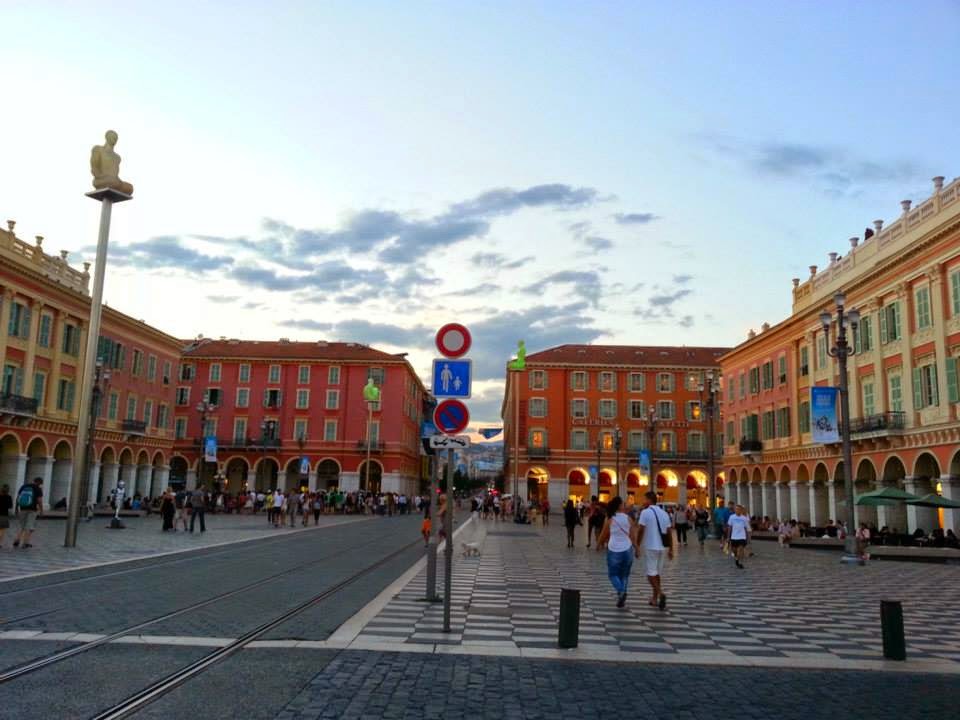(An edited version of this piece was published in the July issue of National Geographic Traveller India)
The first time I held a Nicoise tomato, it was a moment of wonder. It was perhaps the label under this slightly misshapen, pert little berry with green pointy leaves that first sowed the idea of Nice in my overburdened mind. The husband and I were planning a trip to France while juggling deadlines, reorienting ourselves to South Indian ways (we had recently shifted to Bangalore) and struggling with an errant cook. I had to replenish groceries, read and edit manuscripts, plan a holiday and stick to a budget all in one crazy month before we took off for the much-awaited vacation. It was on one such day that I ran out of tomatoes among other things. Now Bangalore is a city of many choices. While the local markets provide a variety of fresh produce, the idea of being an incompetent haggler in an unfamiliar language is as unpleasant as it is a blow to the ego of a die-hard bargain hunter. So there I was on a pretty Sunday morning, in a bright, airy and air conditioned gourmet store sprawled across the top floor of a swanky city mall. The visit to this store was always more of an outing rather than a chore as unfamiliar food and artistic culinary displays always had a strange allure for me taking me to unknown lands on the culinary map. This particular store with its piles of delicate berries, smelly cheeses, exotic mushrooms and candied fruits, was our vicarious food trip across the world. Rare mushrooms, Mediterranean peppers and hairy tropical fruits jostled for space in this alien smorgasbord straight out of a Ridley Scott masterpiece.
It was here that I saw the wonder that was a Nicoise tomato. This was a strange cousin to the ubiquitous, varying-between-Rs-5-to-Rs-50-a-kilogram, commonly used berry of the not so deadly variant of the nightshade. Swaddled in paper tissue and carefully labelled ‘Vine-Ripened Nicoise Tomato’, this was like the discovery of a rare postage stamp to an unknown country. I picked up a couple of these prohibitively expensive, plump beauties and sniffed in their tart aroma and made a mental note to google “Nice”.
A month later and thousands of kilometres away, there I was in an old market burnished by the sun and fringed by the azure Mediterranean waters, staring at tomatoes again. Only this time they were all of the Nicoise variety. From dwarf green variants to oversized and ridged red berries, the food stands on the Cours Saleya were exploding with tomatoes. August was tomato season on the French Riviera and every dish was liberally sauced, every salad was abundant in and every sandwich was generously filled with these tomatoes.
As one of the integral ingredients of the cuisine of the French Riviera and especially Nice otherwise called Cuisine Nissard, tomatoes are the stars of quite a few of the specialties of the region. We feasted on dishes that were crafted as tributes to the magnificent produce of the region which spanned the freshest seafood platters as well as the locally grown and sourced Mediterranean fruits, vegetables, cured meats and sausages as well as the lovely varieties of tomato. Even the simplest dishes, take for example the Coeur de Boeuf (beef heart) tomato and fresh mozzarella slices doused in virgin olive oil with some freshly cracked pepper and sea salt tasted just yum. And then there was the Salad Nicoise which was as much a French cultural icon as it was a personal favourite. The tuna, the anchovies, sun ripened tomatoes, local black olives, artichokes, fava beans and hardboiled eggs combine with salt, pepper and a simple vinaigrette to create a symphony of flavours and an ode to the sun and sea. I ate this on my first afternoon in Nice and on the way out.
There is something about these heirloom tomatoes around these parts that goes perfectly with the innate style of this breezy seaside town on the French Riviera. While gorgeous women in designer hats with their little dogs walk the Promenade Anglais and sleek cars in tomato shades whizz up to the porch of the dazzling Negresco hotel, I contemplate the town and its laidback vibe. Part French, part Italian and all Mediterranean, Nice with its beautiful people and its unshackled bonhomie is a land that enjoys its seaside indulgences. As a haven for eclectic as it is encompassing, In Nice, the backpacker and the luxury traveller jostle for space at the same cafes in the vibrant streets of the Old Town. Art aficionados follow the trails of Matisse and Chagall while those who worship haute couture can find their boutiques and galleries and the bohemian lot can pick up quirky and vintage clothing from shops tucked away in narrow streets. Live music in the pubs till the wee hours to the opera at the grand Opera de Nice, to bustling historical open-air markets like Cours Saleya which are a treat for tomato eaters like, Nice is a panoply of food, drink and plenty and excuse the cliche which in this case rings true, a perfectly rejuvenating break for the mind, body and soul.
It has been many days since I have returned from Nice to my regular life. Memories of that time have changed from the sharp clarity of a photograph and have acquired the softness of an impressionist painting. I remember odd things like the tomatoes and one single moment which I chose to preserve by scribbling a few lines on a ticket stub rather than take a photograph...

